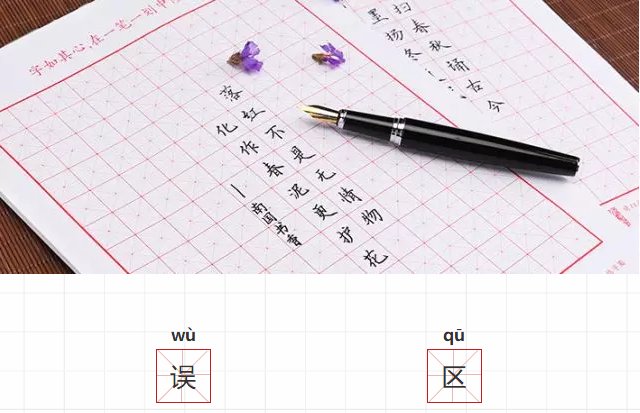I have been practicing calligraphy for two or three months. I can write pretty well in copybooks and rice-shaped grids. However, my normal writing is completely different from the way I write on my copybook. I can write slowly and just fine, but when I write a little bit faster, it is still the same as before. I feel like practicing calligraphy is ineffective, what should I do?

Less practice
Book friends who have just started to practice calligraphy and are not very experienced in writing will face a common dilemma: they can write well when writing, but when writing or creating in daily life, they forget all the words they have written and write The characters that come out are still the same as before. It feels like I have practiced a lot but there is no effect at all. This is a common problem.
Writing by hand relies on instinct, muscle memory and brain reaction speed. Both of these abilities require long-term practice and accumulation to slowly develop.
The problem is
1. Desperate for quick success and eager for success
Practicing calligraphy with the goal of speed is a hooliganism! "Chinese calligraphy cannot be accomplished in a hundred days." If you want to practice calligraphy in ten and a half months, you should really give up as soon as possible. When you really want to practice calligraphy well, you need to be prepared for long-distance running and try to make calligraphy practice a habit instead of a burden.
2. The more you practice, the better you can write
The most fundamental way to practice calligraphy is to write more, read more, think more, analyze more, remember more, and apply more. Many people have practiced calligraphy for many years but have not made much progress. The reason is that they practice before they practice, use before they use, and have a poor sense of applying what they have learned. Secondly, you must have the essentials when practicing calligraphy.
Writing more and being less efficient is often due to the lack of correct practice methods. If you practice according to the correct method, you can get twice the result with half the effort. Consulting and communicating with teachers or friends at a higher level is helpful for improvement.
Solution
1. Adjust your mentality and develop habits
The most important thing in practicing calligraphy is mentality, followed by methods. Don't be in a hurry when practicing calligraphy. Be more interested and less utilitarian. "Take your time" is the real "fast"! Practicing calligraphy means replacing the original writing habits with better writing habits. If you just practice calligraphy on a daily basis and do not memorize it, you will naturally not be proficient in strokes and glyphs. When it comes to actual application, under the rush of time, every bit of what you learned during calligraphy practice will be completely forgotten. , and naturally wrote back to its original form.
2. Master the correct method
Strengthen the practice of reading and writing posts.
"Xiaoman Xiaoman, I have written the copybook several times. Why does it still look bad when I write it myself?"
"You can't just rely on copybooks when practicing calligraphy. What's more important is copybooks."
"Oh, then I'm going to post the post!"
Lining is written in the notebook according to the original post. Lining is divided into three stages: facing, backing, and meaning. Also, the basis of post writing is reading posts.
How to read a post:
① "Meditation". When we practice calligraphy, our mind must be on writing, and we should not have too many distracting thoughts. The mind calmed down;
②"Careful inspection". Use your eyes to compare the original post, whether it is a current post or an ancient post. Carefully observe the difference between the words in the original post and the words we wrote. When you first start practicing, you can observe the angle and position of the strokes;
③"Think carefully". We need to use our brains to think. You don’t need to think too much, think about the relationship between each stroke and why there is this relationship. Just understand these two points;
④ "Practice diligently". After we have read it carefully and thought about it in our minds, we must put pen to paper.
Opposite:
Observe the writing style of the calligraphy and practice it repeatedly until it is accurate.
Facing:
The reason why there is a big difference between daily writing and copying is that we just copy the past and do not remember when copying. In this way, no matter how good it looks on the practice paper, you still won't be able to write without the copybook. The purpose of back-writing is to promote memory, so in the facing stage, it is necessary to deepen the impression over and over again, understand and memorize the pen and structure characteristics of the model post, and then master it through back-reading over and over again, enough to reach the state of muscle memory, and daily writing will be smooth. It won't be difficult.
Meaning:
Only by facing and facing one's back can one pursue the intention again.
Pay attention to the following during daily practice:
If the font structure is not accurate, it means that the post is not read properly. You need to read more! Read carefully! Pay attention to analysis and observation;
If your strokes and lines are not good, it means you don’t have enough control over your pen. You need to practice more single strokes and lines;
If you write quickly, it won't look good. That means you don't have enough drafts. Practice more, observe carefully, and write accurately.
Perhaps these book friends may find it too troublesome and the progress is too slow. You can try practicing for a month first and practice every step. You will definitely find that the words you write are completely different from the original ones.








